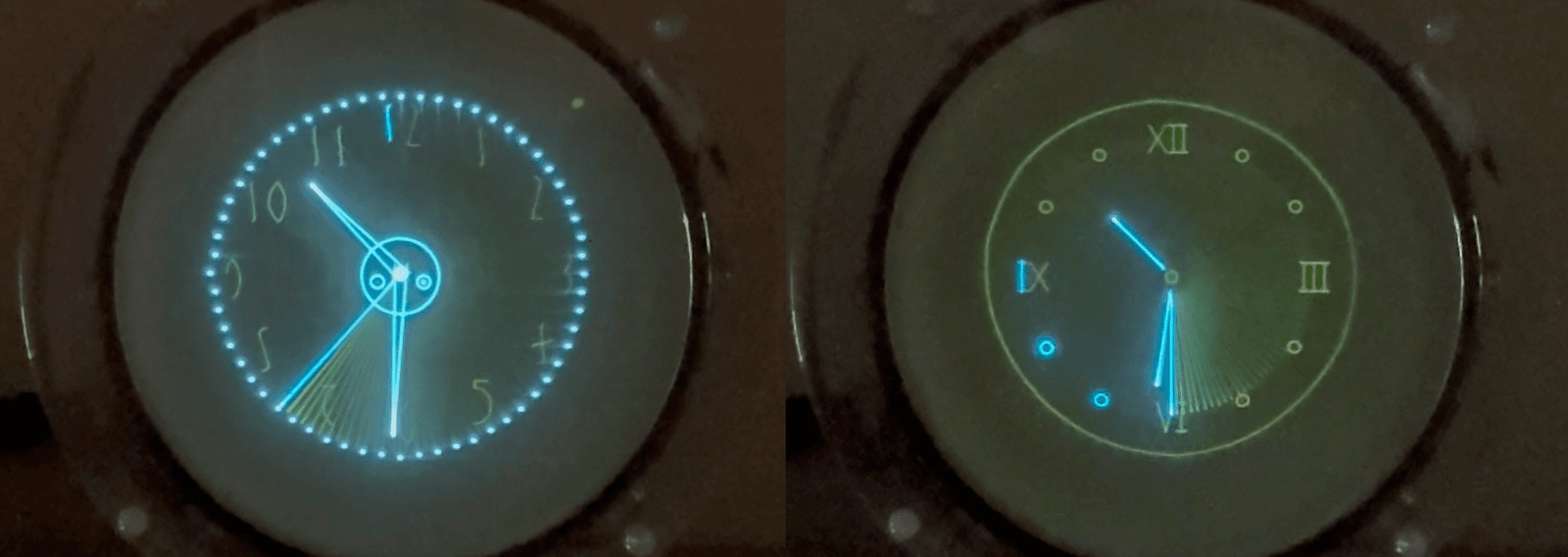Nestled amongst the standard features that come with all Oscilloclocks is a special effect called “Slow motion”. We suspect very few owners have noticed this feature, and fewer yet have actually tried it! It hasn’t been very well advertised… Until now!
No, this video is NOT just being played back slowly.
It’s the graphics rendering itself that
has
been
slowed
down…
Welcome to the Slow motion feature!
What is it doing?
As described in Circle Graphics, every image and character shown on your Oscilloclock is constructed from segments. Each segment is actually an ellipse, arc or a line.
Normally, an image (or text) is displayed on the screen by drawing its segments very quickly, all within the time of one frame. Each frame is completely redrawn 50 times per second. By repeating the drawing so rapidly, and adding in some persistence effects of the CRT phosphor, the human eye can’t see individual segments being drawn.
But when “slow motion” is enabled, only one segment is displayed per frame. For an image or text with 50 segments (at 50 frames per second), it would take 1 second to draw the entire image. At this rate, the eye can easily distinguish each segment as it is rendered!
Enabling slow motion

It’s in the menu!
Menu → Effects → Slow mo delay
A delay value other than 0 turns on the effect. This number indicates the number of frames that each segment will be displayed, before moving on to the next segment. Increasing the number therefore makes for a “slower” rendering of the image.
In the above videos, the delay was set to 1. Here’s what it looks like when set to 10!
Hybrid fast & slow motion!
In the videos so far, you’ve seen the slow motion effect applied only when rendering characters – numbers and text.
This is by design! Most graphics, figures, and images are intentionally left unaffected, so we can enjoy hybrid screens, like the below two examples!
Phosphors and persistence
At this point in the article, dear Oscilloclock owner, you must have tried out the feature on your own device – and you probably noticed a key difference in behaviour…
No doubt you could observe the individual segments being drawn, but they disappeared so rapidly that you couldn’t catch the entire image!
What’s going on? Were all those cool videos above doctored in some way?
Absolutely not!

The difference is the phosphor in your CRT. Most Oscilloclocks to date have shipped with a green P1 or P2, blue P11, or amber P12 phosphor CRT. These are all beautiful phosphors, but they are relatively “fast”. They emit light quickly and brightly when struck by the electron beam, but they have very little persistence; the light fades relatively quickly.
Enter the P7 phosphor! This incredible chemical first fluorescences (lights up) in a pale violet/blue colour, and then phosphoresces (persists) for some time in a yellow colour!
Check out our other posts on the P7 phosphor! The trailing effect and Brimar Beauties for Plug & Play are a great start.
Are you into slow food? Enjoy the slow life? Want to slow down even more? This feature is for you. Sit back, relax and watch electrons traveling at the speed of light actually form characters on your Oscilloclock!

